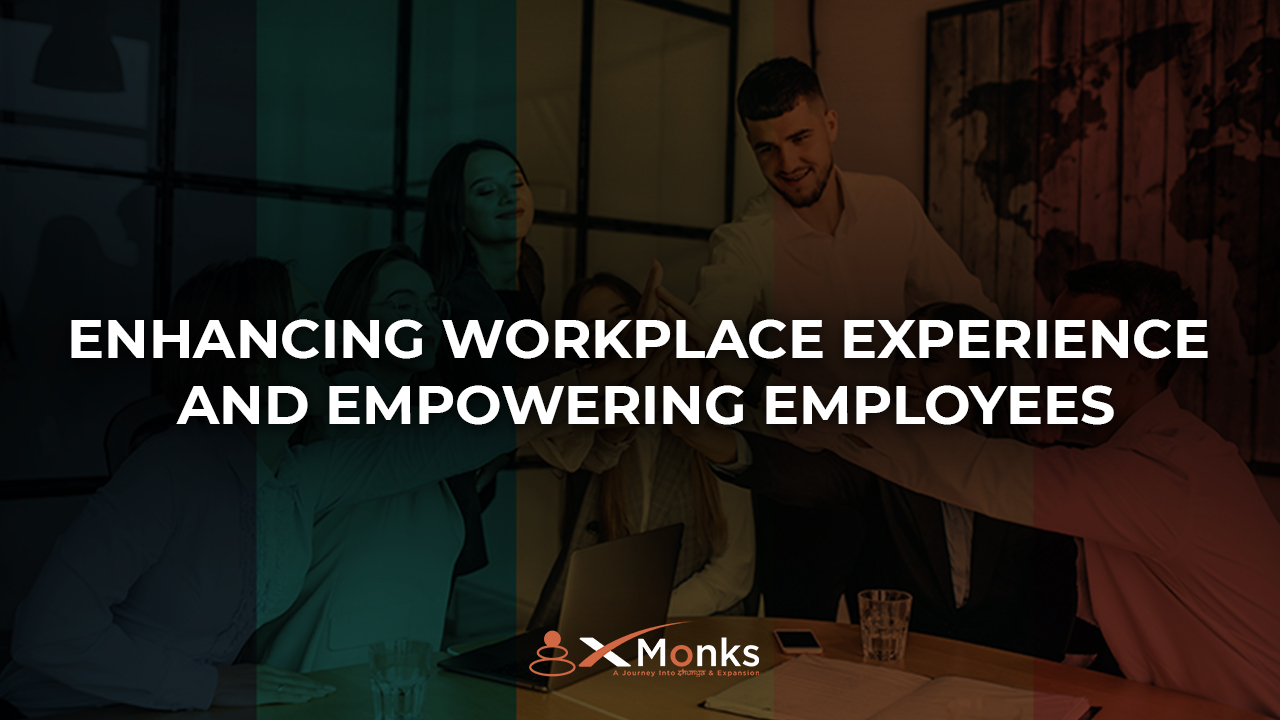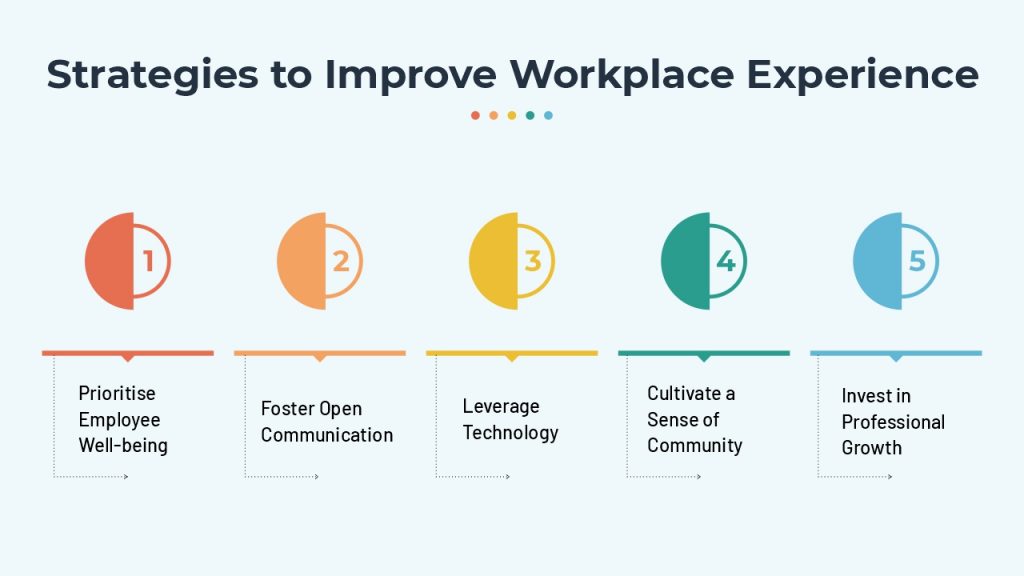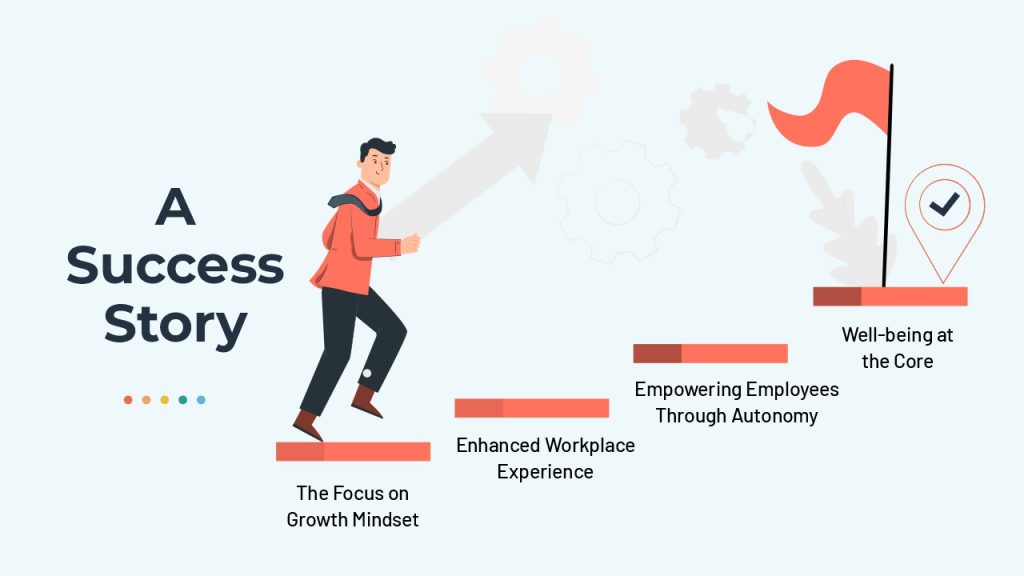Table of Contents
ToggleEnhancing Workplace Experience and Empowering Employees

Imagine a workplace where every corner breathes life into creativity, every interaction sparks motivation, and every individual feels valued. This is the heart of the modern workplace experience—a journey where employees are not just cogs in a machine but essential players in an orchestra.
In today’s rapidly shifting corporate landscape, workplace experience has evolved into more than just an office environment. It encapsulates the holistic interaction between employees and their workplace, encompassing culture, technology, and well-being. Paired with the philosophy of empowering employees, it creates a dynamic synergy that can propel organisations to new heights.
Gone are the days when micromanagement and rigid structures defined success. Empowering employees is no longer optional—it’s essential. It fosters trust, ownership, and innovation, crafting a space where employees don’t merely work but thrive. Let’s delve deeper into this beautiful interplay and discover how it can revolutionise the modern workplace.
Understanding Workplace Experience
Workplace experience is more than the furniture in an office or the policies in a handbook—it’s the sum of every interaction, environment, and emotion an employee encounters. From the moment they walk through the doors (or log in remotely), they step into a microcosm of culture, collaboration, and purpose. But why is this concept so essential in the modern era?
In today’s world, workplace experience serves as the heartbeat of an organisation. It shapes how employees feel, how they perform, and ultimately, how they grow. It’s about weaving together physical spaces, digital tools, and human relationships into a seamless, inspiring environment. Think of it as the ecosystem in which talent thrives—a delicate balance that, when nurtured, leads to innovation and productivity.
A positive workplace experience doesn’t just benefit the individual. It ripples outward, elevating teams, boosting organisational morale, and reflecting in customer satisfaction. Whether it’s an ergonomically designed office, a robust remote setup, or regular recognition programs, these elements remind employees they’re valued.
The real magic lies in personalisation. Each individual brings their unique needs, strengths, and aspirations to the table. A thriving workplace experience acknowledges this diversity, offering flexible work arrangements, wellness programs, and opportunities for growth. When an employee feels their environment aligns with their personal and professional goals, their potential knows no bounds.
In this dance of engagement and satisfaction, leadership plays the pivotal role of choreographer. It’s not about grand gestures but the small, consistent acts of empathy and foresight—listening to employees, adapting to their needs, and creating a space where they feel heard.
The result? A symphony of collaboration, creativity, and loyalty. Workplace experience, when mastered, is not just an operational asset but a strategic advantage. It’s the difference between a job and a journey, between merely working and truly belonging.
The Importance of Empowering Employees
Empowering employees is akin to planting seeds in fertile soil—when done thoughtfully, it yields a harvest of innovation, engagement, and resilience. It’s not just a leadership strategy but a profound acknowledgment of human potential.
At its core, empowerment is about trust. It’s giving employees the autonomy to make decisions, voice ideas, and take ownership of their work. It transforms workplaces into arenas of collaboration and creativity, where individuals feel their contributions matter. Empowering employees fosters a sense of belonging and purpose, two ingredients vital for sustained growth.
Imagine a team where every member feels capable and confident. This confidence doesn’t just happen; it’s nurtured through mentorship, skill development, and open communication. Empowerment is a reciprocal process—leaders provide the tools and support, and employees rise to the occasion.
The benefits of empowering employees extend far beyond the individual. Organisations that prioritise empowerment see higher retention rates, greater adaptability, and improved problem-solving. It’s no coincidence that companies celebrated for innovation also rank high in employee empowerment.
However, empowerment isn’t a one-size-fits-all approach. It’s about understanding individual strengths and tailoring opportunities accordingly. It requires leaders to balance guidance with freedom, creating an environment where employees feel safe to take risks and learn from failures.
In the end, empowering employees is an act of shared trust and respect. It’s about building bridges rather than hierarchies, inviting collaboration instead of competition. And in this dynamic exchange, both individuals and organisations reach new heights.
Strategies to Improve Workplace Experience
Enhancing workplace experience isn’t a single task; it’s an ongoing journey. Just as a garden needs consistent care, a thriving workplace demands intentional strategies and thoughtful execution.

- Prioritise Employee Well-being
Well-being is the foundation of a positive workplace experience. Offering mental health resources, wellness programs, and flexible schedules sends a clear message: employees are valued as individuals, not just workers. - Foster Open Communication
Transparency and communication are the lifelines of any workplace. Regular check-ins, feedback loops, and open-door policies create a culture where employees feel heard and understood. - Leverage Technology
In the era of hybrid work, digital tools are essential for seamless collaboration. From project management software to virtual meeting platforms, the right technology enhances productivity while simplifying tasks. - Cultivate a Sense of Community
A workplace is more than its processes—it’s a community. Hosting team-building activities, celebrating milestones, and encouraging diversity strengthens connections and boosts morale. - Invest in Professional Growth
Opportunities for learning and development are critical. Whether it’s workshops, mentorship, or tuition reimbursement, employees thrive when they see a clear path for growth.
By implementing these strategies, organisations can create a workplace experience that not only attracts talent but also retains it. A place where employees don’t just work—they flourish.
Empowering Employees Through Leadership
Leadership is the cornerstone of empowerment. A great leader doesn’t hoard power but distributes it, like sunlight nurturing a forest. By doing so, they create a workplace where employees can grow tall and strong.
Empowering employees begins with trust. Leaders who delegate tasks, encourage decision-making, and celebrate autonomy set the stage for a culture of confidence. This trust isn’t blind; it’s supported by guidance and resources that ensure employees succeed.
But empowerment isn’t just about tasks—it’s about vision. Inspirational leaders articulate a purpose that resonates, helping employees see the bigger picture. When individuals understand how their work contributes to a greater goal, they feel motivated to excel.
Empathy, too, is vital. Leaders who listen, adapt, and advocate for their teams foster an environment where challenges are met with support, not judgment. It’s this combination of trust, vision, and empathy that turns leaders into enablers of growth.
The Symbiosis of Workplace Experience and Empowerment
Workplace experience and employee empowerment are two sides of the same coin. One fuels the other in a continuous loop of growth and engagement.
When the workplace experience is positive, employees feel valued and motivated. This, in turn, empowers them to take initiative, share ideas, and contribute meaningfully. Conversely, empowered employees enhance workplace culture through their enthusiasm and innovation.
It’s a symbiosis that benefits all—employees thrive, teams perform, and organisations succeed. The relationship between these elements is a reminder that work is not just about tasks but about creating spaces where people can be their best selves.
A Success Story
Let’s take a moment to peek into the success story of Microsoft—an organisation that has redefined itself by prioritising workplace experience and empowering its employees.
A few years ago, Microsoft underwent a significant cultural transformation under the leadership of CEO Satya Nadella. The company transitioned from a competitive, siloed work environment to one that embraced collaboration, innovation, and inclusivity. At the heart of this shift was the idea of empowering employees and enhancing their experience at work.

- The Focus on Growth Mindset
Nadella introduced a “growth mindset” culture, where employees were encouraged to experiment, take risks, and learn from failures. This shift allowed individuals to feel more confident and supported in their roles, fostering innovation and creativity. Employees no longer feared making mistakes; instead, they were motivated to approach challenges with curiosity and resilience. - Enhanced Workplace Experience
Microsoft also transformed its physical and digital workplace experience. Modern, open-concept office spaces replaced cubicles, promoting collaboration and communication. On the digital front, the company emphasised tools like Microsoft Teams to enhance connectivity and streamline workflows, ensuring employees could work effectively from anywhere. - Empowering Employees Through Autonomy
To empower its workforce, Microsoft implemented programs that allowed employees to have a voice in decision-making processes. For example, their annual “Hackathon” gives employees across the globe the freedom to work on innovative projects that align with their passions. These projects not only contribute to Microsoft’s growth but also allow employees to feel a sense of ownership and accomplishment. - Well-being at the Core
Understanding the importance of well-being, Microsoft prioritised mental health and work-life balance. They introduced flexible work policies, generous parental leave, and wellness programs that ensured employees felt cared for on a personal level.
The results? Microsoft’s cultural and operational shifts have significantly boosted employee satisfaction, innovation, and financial performance. The company is now seen as a leader in not just technology but also in creating an environment where employees thrive.
This example showcases how a thoughtful blend of enhancing workplace experience and empowering employees can lead to remarkable organisational success. Like a carefully tuned orchestra, every element works in harmony to create something truly extraordinary.
The Future of Workplace Experience and Employee Empowerment
As the world of work evolves, so too must our approach to workplace experience and empowerment. The future lies in personalisation, technology, and humanity.
AI and data analytics will help organisations tailor experiences to individual needs, while leaders will focus on empathy and inclusion. The hybrid model will become the norm, requiring new strategies for connection and collaboration.
In this future, empowering employees will be non-negotiable. Organisations will recognise that their greatest asset is their people—and that investing in them is the key to lasting success.
The road ahead is filled with opportunities to reimagine work, not as a place but as an experience. One where empowerment and engagement lead the way.
FAQs
Conclusion
Workplace experience and employee empowerment are two sides of the same coin. Together, they create a thriving ecosystem where innovation, productivity, and satisfaction coexist. It’s time for organisations to embrace this symbiosis, crafting environments where every employee feels empowered to shine.

